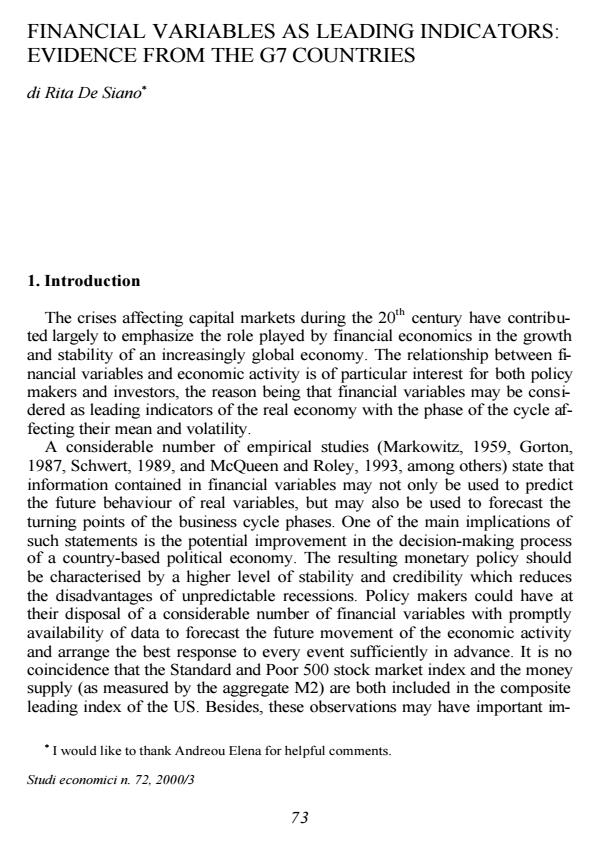Financial Variables as Leading Indicators: Evidence from the G7 Countries
Journal title STUDI ECONOMICI
Author/s Rita De Siano
Publishing Year 1 Issue 2000/72
Language English Pages 34 P. File size 148 KB
DOI
DOI is like a bar code for intellectual property: to have more infomation
click here
Below, you can see the article first page
If you want to buy this article in PDF format, you can do it, following the instructions to buy download credits

FrancoAngeli is member of Publishers International Linking Association, Inc (PILA), a not-for-profit association which run the CrossRef service enabling links to and from online scholarly content.
<i> Financial Variables as Leading Indicators: Evidence from the G7 Countries </i> (by Rita De Siano) - ABSTRACT: This study analyses the behaviour of financial variables, such as the stock market return index and interest rates, over the business cycle phases in order to ascertain whether they can be used as leading indicators of the real economy. The analysis, applied to the G7 countries, is based on an AR-GARCH model, considered to be the best in modelling the dynamic behaviour of the conditional mean and volatility for high frequency speculative price data. The phase of the business cycle appears to have a considerable effect on the behaviour and predictability of both the conditional moments. Evidence is given that mean and volatility may be better forecasted during expansion than during recession. The regular reaction of financial variables to the approach of any phase implies that they may be considered as appropriate leading indicators of real economic activity. The higher the frequency of the data, the better the accuracy of the analyses and the information they contain. JEL Classification: C5, C8, E3, E4, G1.
Rita De Siano, Financial Variables as Leading Indicators: Evidence from the G7 Countries in "STUDI ECONOMICI " 72/2000, pp , DOI: